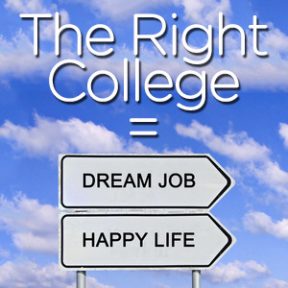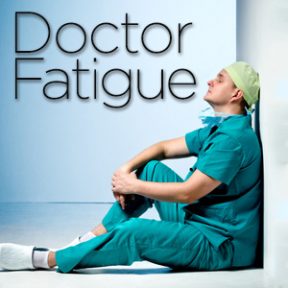 Did you know that heart attacks kill 5 times more women than breast cancer?
Did you know that heart attacks kill 5 times more women than breast cancer?
That’s a sobering stat. My daughter Nicole just sent me this article to help me understand that heart attacks in women are very different from heart attacks in men. While I knew this in theory, I was surprised that just feeling clammy and nauseous could be signs of a heart attack. This 46-year-old woman thought she had the flu and would have gone to bed to sleep it off had her husband not intervene by taking her to the emergency room. Read this fascinating article in the Washington Post: “She thought it was only a 24-hour bug. What she really had almost killed her.”
After reading about this woman’s symptoms and her reaction to them, I feel a little bit more convinced to head to the ER to get checked out instead of being optimistic and hope it goes away. The difference could be life or death. As ridiculous as this sounds, my biggest obstacle to going to the ER is my fear that the doctors would think I was a nuisance or a hypochondriac. But after Nicole (an ER doc) told me that she’d rather see me in the ER and tell me that I should go home because I have the flu or indigestion than to have me stay home and die from a heart attack, I’m going to play it safe. And by the way, that’s advice for all patients, not just for her mom.
[Source]
 Did you know that heart attacks kill 5 times more women than breast cancer?
Did you know that heart attacks kill 5 times more women than breast cancer?
That’s a sobering stat. My daughter Nicole just sent me this article to help me understand that heart attacks in women are very different from heart attacks in men. While I knew this in theory, I was surprised that just feeling clammy and nauseous could be signs of a heart attack. This 46-year-old woman thought she had the flu and would have gone to bed to sleep it off had her husband not intervene by taking her to the emergency room. Read this fascinating article in the Washington Post: “She thought it was only a 24-hour bug. What she really had almost killed her.”
After reading about this woman’s symptoms and her reaction to them, I feel a little bit more convinced to head to the ER to get checked out instead of being optimistic and hope it goes away. The difference could be life or death. As ridiculous as this sounds, my biggest obstacle to going to the ER is my fear that the doctors would think I was a nuisance or a hypochondriac. But after Nicole (an ER doc) told me that she’d rather see me in the ER and tell me that I should go home because I have the flu or indigestion than to have me stay home and die from a heart attack, I’m going to play it safe. And by the way, that’s advice for all patients, not just for her mom.
[Source]
 What fun it was for Logan and Pascal to share their projects on KSCO’s Planet Watch Show!
What fun it was for Logan and Pascal to share their projects on KSCO’s Planet Watch Show!
Joe Jordan and Rachel Goodman, the co-hosts of this progressive show that features exciting cutting-edge science and technology that can protect, and possibly save civilization and the planet, interviewed the students for over 30 minutes yesterday.
Both students have founded their own organizations that give individual people incentive to do their part to reduce CO2 in the atmosphere (Logan) and reduce our population on earth (Pascal).
Listen to an archive of the show here, or click here and then click the March 26, 2017 episode’s “download” link to either download or play the file (different browsers will behave in different ways).
Please go to Logan’s website: www.WhenNotIf.org to pledge to reduce driving.
Please go to Pascal’s website: www.PopOverPop.com to pledge to have no more than 2 children!
They make it easy for you to do your part!
 Tune into KSCO’s Planet Watch Show (1080 AM) on Sunday, March 26th! Two of my students will be presenting their projects that can very well get everyday people to change their impact on this planet. Logan will talk about his When, Not If organization and how YOU can help us prevent millions of lbs of CO2 from entering the atmosphere. Pascal will talk about how having just 2 children per couple can mitigate a host of problems by lowering our population with her project Preventing Overpopulation P.O.P. My good friend Joe Jordan and Rachel Goodman are the hosts for Planet Watch. It’s entertaining and fascinating!
Tune into KSCO’s Planet Watch Show (1080 AM) on Sunday, March 26th! Two of my students will be presenting their projects that can very well get everyday people to change their impact on this planet. Logan will talk about his When, Not If organization and how YOU can help us prevent millions of lbs of CO2 from entering the atmosphere. Pascal will talk about how having just 2 children per couple can mitigate a host of problems by lowering our population with her project Preventing Overpopulation P.O.P. My good friend Joe Jordan and Rachel Goodman are the hosts for Planet Watch. It’s entertaining and fascinating!
If you miss the radio talk show or if you live out of the area, just go HERE. Archives will be available on the same page after the show airs.
 The Criteria for Choosing Colleges has changed; Make sure your child considers these factors!
The Criteria for Choosing Colleges has changed; Make sure your child considers these factors!
6 factors to consider when choosing your college
If you have a child who is considering which colleges to apply to or if they’re already seniors and they’re weighing their college options now, consider behavioral economics instead of rankings. Forget about the US News and World Report – they collect data based on admissions yields, retention, grades, test scores, and graduation rates. While this may seem important, they don’t include career satisfaction or how prepared grads are for real life.
The Gallup-Purdue Index has surveyed 60,000 graduates (over 80 years) about their satisfaction with their college experience and preparation for a successful career and a happy life. It lists 5 essential elements of a “Great Life”: Purpose, Social, Financial, Community and Physical Well Being.
Here is what is key in getting the most out of the college experience.
Instead of looking at rankings, prestige of college, and physical characteristics of the college, successful college grads who have a great life now consider the following elements essential to the college experience:
- At least one professor who made them excited about learning
- One professor who cared about them as a person
- One mentor who encouraged their goals and dreams
- Long-term PROJECT (more than a semester to complete)
- Internship or job where they applied class learning
- Extreme involvement in extracurricular activities and organizations
Sadly, less than 30% of college grads in the US experienced any of the above. Seriously? Those who had a job or internship in college where they applied what they were learning in the classroom were twice as likely to be engaged at work later in life. 82% of those who experienced all 6 elements above feel that their college experience prepared them well for life after college; and by a strong contrast, only 5% of those who did NOT experience any of the above felt well prepared for life.
The US News and World Report does not consider any of these vital factors into their rankings today. Hmm. Now that Gallup has conducted behavioral economics studies about colleges and universities, we’ll see more information about what really matters when our children go to college. So as your child starts considering colleges, ask questions about how engaged your child will be with professors, internships and student activities. Seems like these are more important considerations than the old ranking system.
[Source]
 We had so much fun doing the first Rock ‘n Roll Revue that we did a more comprehensive production the following summer. Naturally we covered Chuck Berry again – and this time we did “Johnny B. Goode” in our production of It’s Gotta Be Rock ‘n Roll Music: 1955-1975.
We had so much fun doing the first Rock ‘n Roll Revue that we did a more comprehensive production the following summer. Naturally we covered Chuck Berry again – and this time we did “Johnny B. Goode” in our production of It’s Gotta Be Rock ‘n Roll Music: 1955-1975.
Our 8th and 4th graders gave speeches about the history of rock ‘n roll and how Chuck Berry influenced just about every musician who followed him in the 50’s, 60’s and early 70’s. These students created a business called Merit Oldies Entertainment where they performed 30-minute and 60-minute musical performances all over the San Francisco Bay Area.
They even opened the Frankie Valli Concert in Monterey!
 For all of you seniors who are waiting to hear from UCs, here’s a quick update.
For all of you seniors who are waiting to hear from UCs, here’s a quick update.
– You should hear from all UCs by March 31st.
– If you receive an invitation to be placed on a waitlist, you need to respond. You are not automatically placed on the waitlist.
– If you are on a waitlist for your #1 college, you still need to accept and pay the deposit to another college to ensure that you are going to college in the fall. You will lose your deposit from – that college if you are accepted to and plan to attend your #1 college (waitlisted on).
– If you are positive you want to attend the UC you’ve been accepted to, submit your Statement of Intent (SIR) with your $250 deposit before May 1st.
– Sign up for Orientation ASAP; some colleges require that students attend Orientation before the start of the new term.
– Submit all high school and college transcripts, AP/IB and or A-Level exam results by July 15th. Make sure you receive a C- or better in all classes; colleges may rescind enrollment to students whose grades have dropped below a C-.
– Withdraw your application from other campuses after you decide where you are going to college; this gives colleges the opportunity to offer enrollment to waitlisted students.
Check out this tribute to Chuck Berry taken from Merit Academy’s production of “It’s Gotta Be Rock ‘n Roll Music: 1955-1964.”
The 7th and 3rd graders gave short speeches about what was happening in the 1950s and about each artist before performing their #1 hits.
For Chuck Berry, we performed “Maybelline.” It’s lots of fun — and educational — to watch!
 Yesterday I blogged about how medical residents are being forced to work 24-28 hour shifts. Today, let’s look at how the National Resident Matching Program (the Match) devised a system to create residents programs that enables hospitals to pay low salaries while demanding double or triple the hours and not have to pay overtime. Wow. Resident work hours and conditions are considered worse than the horror stories you hear about Chinese factory workers. Really?
I vividly remember Match Day at Stanford Medical School in 2013. 80+ med students gathered with their parents in a large auditorium in March. The med students had interviewed all over the country to rank their top~10 hospitals where they hoped to do their residencies. The president of SMS handed out white envelopes to each medical student and asked them to wait until all of the students had received theirs. Then, all of the students opened their envelopes at the same time (across the nation) to see where they were going to spend the next 3-7 years of their lives (depending on specialty). What happened next surprised me. Some screamed with excitement, others burst into tears, while others stood in shock. I was appalled by this seemingly inhumane and unprofessional way for a medical student to select the best residency program. These students had previously chosen their colleges and chosen their medical schools. Every other profession gives more fluidity in making these important decisions. So why does the Match have this arbitrary protocol that gives residents no say in where they’ll be doing their residency?
It’s always about the money.
The Match is a computerized processing system that assigns each medical student graduate to the hospital where they will do their residency. The system is supposed to allow med students to rank the hospitals and the hospitals to rank the students to create this fair match based on who wants whom the most. Although it might sound fair on the surface, it really isn’t. Here’s why:
First, this decision is non-negotiable. The students sign the contract before the Match to accept all employment conditions such as position, schedule, pay, and benefits – whatever is inside that envelope.
Second, the hospitals collude in salary-setting across the nation. They make some exceptions only for cost-of-living increases in different cities.
Third, residents can’t change hospitals. This gives hospitals no incentive to offer fair wages or humane work schedules.
Fourth, residents are required to work 80+ hours per week and 24+ hour shifts. Hospitals use residents to do non-patient care (clerical work or transporting equipment and patients) to save money on more expensive employee wages.
The consequences are dangerous – for everyone.
Yesterday I blogged about how medical residents are being forced to work 24-28 hour shifts. Today, let’s look at how the National Resident Matching Program (the Match) devised a system to create residents programs that enables hospitals to pay low salaries while demanding double or triple the hours and not have to pay overtime. Wow. Resident work hours and conditions are considered worse than the horror stories you hear about Chinese factory workers. Really?
I vividly remember Match Day at Stanford Medical School in 2013. 80+ med students gathered with their parents in a large auditorium in March. The med students had interviewed all over the country to rank their top~10 hospitals where they hoped to do their residencies. The president of SMS handed out white envelopes to each medical student and asked them to wait until all of the students had received theirs. Then, all of the students opened their envelopes at the same time (across the nation) to see where they were going to spend the next 3-7 years of their lives (depending on specialty). What happened next surprised me. Some screamed with excitement, others burst into tears, while others stood in shock. I was appalled by this seemingly inhumane and unprofessional way for a medical student to select the best residency program. These students had previously chosen their colleges and chosen their medical schools. Every other profession gives more fluidity in making these important decisions. So why does the Match have this arbitrary protocol that gives residents no say in where they’ll be doing their residency?
It’s always about the money.
The Match is a computerized processing system that assigns each medical student graduate to the hospital where they will do their residency. The system is supposed to allow med students to rank the hospitals and the hospitals to rank the students to create this fair match based on who wants whom the most. Although it might sound fair on the surface, it really isn’t. Here’s why:
First, this decision is non-negotiable. The students sign the contract before the Match to accept all employment conditions such as position, schedule, pay, and benefits – whatever is inside that envelope.
Second, the hospitals collude in salary-setting across the nation. They make some exceptions only for cost-of-living increases in different cities.
Third, residents can’t change hospitals. This gives hospitals no incentive to offer fair wages or humane work schedules.
Fourth, residents are required to work 80+ hours per week and 24+ hour shifts. Hospitals use residents to do non-patient care (clerical work or transporting equipment and patients) to save money on more expensive employee wages.
The consequences are dangerous – for everyone.
 When my daughter did her “time” – at Stanford Medical School – I was outraged. Being her mom, it worried me to see her work 14-16 hour shifts, and then go home to study for 4-5 hours, and then get up a few hours later to start again. This became her norm because she might not get a day off for 2 weeks. In hindsight, they were going easy on her because the American Medical Association (AMA) supposedly protects medical students from being abused. Medical students get holidays off, but not medical residents.
Nicole finished med school back in 2013 and started her 4-year emergency medicine residency at Harbor-UCLA that same year. She was thrilled to work with the best emergency docs in the country where she had the opportunity to work with diverse and high-risk patients. A typical shift for residents is 10-30 hours and shifts rotated from day, swing, to night at random. She often worked 6 days in a row without a break, and even when she had a day off, she often covered for other residents who had family emergencies. Today, first-year residents cannot work more than 16 hours per shift. SIXTEEN hours! That is outrageous! By law, other employees can’t work more than 8 hours without getting overtime. The Federal Aviation Administration (FAA) requires airline pilots have to log in 8 hours of sleep before being allowed to fly commercial planes, and they’re allowed to fly a maximum of 8 hours per shift. So in what universe does anyone think that it’s a good idea to have doctors making life and death decisions during a 16-hour shift?
But 16-hour shifts will soon be “the good old days”, because now first-year residents will be allowed to work 24 hours (sometimes 28 for transitions between shifts) per shift without a break. Seriously? Second-, third-, and fourth-year residents already work 16-30 hour shifts. The Accreditation Council for Graduate Medical Education (ACGME) made this executive decision that will take effect on July 1st of this year. They claim that residents need to see a patient through from the beginning to the end, and that patients want to know that their doctor is taking care of them. Really? If I needed to be in the hospital for 24 – or let’s say 36 hours, I would want her to go home after 8 hours to get some down time and sleep so I could see her again during her next shift when she’s at the top of her game. I’d much rather have 3 or 4 alert and conscious doctors taking care of me than a doctor who is delirious with sleep deprivation.
Dr. Michael Carome, director of Public Citizen’s Health Research Group, says “Study after study shows that sleep-deprived resident physicians are a danger to themselves, their patients, and the public.” This cruel and antiquated system is really hazing at its worst. Many established doctors feel that because they went through it, all new doctors should go through it too.
As an educator, I recommend that students get 8-9 hours of sleep per night in order to be able to learn and retain information. Sleep deprivation alters everyone’s conscientiousness. This is not a new revelation so why would an important institution demand such ridiculous hours?
A few years ago, I called the California Labor Commission to inquire about the 16-hour shifts, lack of breaks, no overtime pay, and maximum number of consecutive work days. I fully expected to expose the labor abuse in medical residency programs and was happy to be the whistle blower. But, I was appalled to find that the ACGME found loopholes making it legal for hospitals to demand 16-hour shifts without paying overtime, to not give breaks, to not give regular “weekends” or days off.
Here is a link to a review of the studies reflecting the impact of duty hours on just resident driving safety (not including burn-out, quality of life, or patient safety). It includes reaction times, falling asleep at the wheel, and motor vehicle accidents. With scientific research proving that there are more accidents, mistakes, and deaths caused by residents who work more than 12 hours per shift, I would like to see the ACGME set resident work schedules to protect the patients and residents, just like the FAA regulates pilots’ flight schedules to protect their passengers.
[Source]
When my daughter did her “time” – at Stanford Medical School – I was outraged. Being her mom, it worried me to see her work 14-16 hour shifts, and then go home to study for 4-5 hours, and then get up a few hours later to start again. This became her norm because she might not get a day off for 2 weeks. In hindsight, they were going easy on her because the American Medical Association (AMA) supposedly protects medical students from being abused. Medical students get holidays off, but not medical residents.
Nicole finished med school back in 2013 and started her 4-year emergency medicine residency at Harbor-UCLA that same year. She was thrilled to work with the best emergency docs in the country where she had the opportunity to work with diverse and high-risk patients. A typical shift for residents is 10-30 hours and shifts rotated from day, swing, to night at random. She often worked 6 days in a row without a break, and even when she had a day off, she often covered for other residents who had family emergencies. Today, first-year residents cannot work more than 16 hours per shift. SIXTEEN hours! That is outrageous! By law, other employees can’t work more than 8 hours without getting overtime. The Federal Aviation Administration (FAA) requires airline pilots have to log in 8 hours of sleep before being allowed to fly commercial planes, and they’re allowed to fly a maximum of 8 hours per shift. So in what universe does anyone think that it’s a good idea to have doctors making life and death decisions during a 16-hour shift?
But 16-hour shifts will soon be “the good old days”, because now first-year residents will be allowed to work 24 hours (sometimes 28 for transitions between shifts) per shift without a break. Seriously? Second-, third-, and fourth-year residents already work 16-30 hour shifts. The Accreditation Council for Graduate Medical Education (ACGME) made this executive decision that will take effect on July 1st of this year. They claim that residents need to see a patient through from the beginning to the end, and that patients want to know that their doctor is taking care of them. Really? If I needed to be in the hospital for 24 – or let’s say 36 hours, I would want her to go home after 8 hours to get some down time and sleep so I could see her again during her next shift when she’s at the top of her game. I’d much rather have 3 or 4 alert and conscious doctors taking care of me than a doctor who is delirious with sleep deprivation.
Dr. Michael Carome, director of Public Citizen’s Health Research Group, says “Study after study shows that sleep-deprived resident physicians are a danger to themselves, their patients, and the public.” This cruel and antiquated system is really hazing at its worst. Many established doctors feel that because they went through it, all new doctors should go through it too.
As an educator, I recommend that students get 8-9 hours of sleep per night in order to be able to learn and retain information. Sleep deprivation alters everyone’s conscientiousness. This is not a new revelation so why would an important institution demand such ridiculous hours?
A few years ago, I called the California Labor Commission to inquire about the 16-hour shifts, lack of breaks, no overtime pay, and maximum number of consecutive work days. I fully expected to expose the labor abuse in medical residency programs and was happy to be the whistle blower. But, I was appalled to find that the ACGME found loopholes making it legal for hospitals to demand 16-hour shifts without paying overtime, to not give breaks, to not give regular “weekends” or days off.
Here is a link to a review of the studies reflecting the impact of duty hours on just resident driving safety (not including burn-out, quality of life, or patient safety). It includes reaction times, falling asleep at the wheel, and motor vehicle accidents. With scientific research proving that there are more accidents, mistakes, and deaths caused by residents who work more than 12 hours per shift, I would like to see the ACGME set resident work schedules to protect the patients and residents, just like the FAA regulates pilots’ flight schedules to protect their passengers.
[Source]
 My friend called me in a panic because her husband, a surgeon, had just attempted to “fix” their toilet and water was going everywhere. She told me that while he was a brilliant surgeon, that’s where the brilliance ended because he knew nothing about common sense things. Wow! Today it seems that we are labeled and categorized to fit into specific places. We are neither expected nor taught to expand our understanding of basic survival skills.
My friend called me in a panic because her husband, a surgeon, had just attempted to “fix” their toilet and water was going everywhere. She told me that while he was a brilliant surgeon, that’s where the brilliance ended because he knew nothing about common sense things. Wow! Today it seems that we are labeled and categorized to fit into specific places. We are neither expected nor taught to expand our understanding of basic survival skills.
Since the Industrial Revolution, we’ve become a society of assembly lines. We specialize in one skill, and then that’s all we do. If we were robots, that would be the logical and practical way to utilize our time. But we live in homes that have electrical and plumbing hidden behind sheetrock, and walls built with 2” by 4” on 16” centers. We’re never officially taught how houses are built so when there is a plumbing problem, we call the plumber. Electrical problem, an electrician.
Not knowing how things work around your house can make you feel incompetent. Having to call in a contractor every time you need some minor work done is time consuming and costly. I think all students should spend a summer working with a building contractor to learn the inner workings of a house or building. It would help students build a sense of independence and confidence.
For Christmas one year, I gave my girls tool kits complete with electric drills, Dremel tools, hammers, screwdrivers, measuring tapes, and anything I could fit in the tool box. While they weren’t thrilled with these gifts back then, I’ve noticed that they keep it handy in their homes today, and I’m glad to see that they know how to use their tools.
When they were in high school, they built their own vanities for their bedrooms one summer. They learned how to use a saber saw to cut the shape, a router to round the corners, and a belt sander to smooth the surface. Rob showed them how to wire 7 light bulbs around the mirror.
I learned how to build furniture by getting tips from the guys at San Lorenzo Lumber. I buy all of my materials from them because their staff (Mario and Craig are my favorites) are incredibly knowledgeable and helpful. I’ve built 90% of my home and office furniture since 1976. I love to design furniture because I get exactly what I want with the safe materials I prefer (no particle board or Masonite!).
Wouldn’t it be ideal for students to learn how to build a house and how to use power and hand tools before they move out to live on their own? Most students barely know how to handle a hammer and certainly don’t understand how to build furniture or any phases of building construction. We certainly want our kids to be able to troubleshoot problems in their future homes, right?










